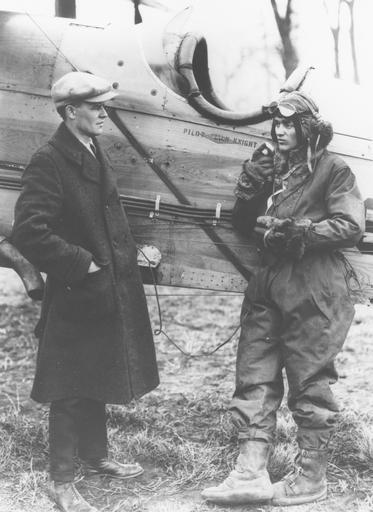MAKE A MEME
View Large Image

| View Original: | Photograph_of_airmail_pilot_Jack_Knight_and_unidentified_individual.jpg (4020x5523) | |||
| Download: | Original | Medium | Small | Thumb |
| Courtesy of: | www.flickr.com | More Like This | ||
| Keywords: smithsonian institution smithsonianinstitution men two standing goggles cap aviation aviator plane knight pilot airmail boots 1922 aircraft airplane biplane us mail usmail us air mail usairmail de havilland dehavilland de havilland d.h.4 dehavillanddh4 d.h.4 dh4 photo emulsion photoemulsion national postal museum nationalpostalmuseum cockpit solo two men twomen flight radio open cock pit opencockpit jack knight jackknight james herbert knight jamesherbertknight james herbert 'jack' knight jamesherbertjackknight james h. 'jack' knight jameshjackknight james h. knight jameshknight j.h. knight jhknight james knight jamesknight blackandwhite monochrome black and white Date: 1922 Object number: A.2009-11 Medium: paper; photo-emulsion Description: Unidentified individual and airmail pilot Jack Knight standing next to Knight's de Havilland airplane. In 1922 Knight was one of a group of airmail pilots who helped test the use of radios in aircraft for the Post Office Department. At the time, airplane cockpits were sparse, and did not include radios. The debate over the use of radio in mail aircraft included a discussion over its purpose. Were airborne radios to be used by pilots merely to inform their superiors of their location? Or to help transmit weather information to the pilots, helping them avoid potentially deadly storms? Postal officials determined that radios were important as a communication method between field operations, but not necessary inside the aircraft. In 1920 the Department ordered radio stations installed at each of the planned transcontinental airmail fields. Field and division managers used radio to track aircraft and share weather information. In the 1922 tests, Knight flew with a radio set in his airplane. The receiver was located under his helmet and the transmitter on his chest. The whole mechanism, including batteries, weighed 170 pounds. After the 1922 tests, the topic was set aside for lack of funding until 1925. National Postal Museum, Curatorial Photographic Collection Photographer: Unknown Place: United States of America See more items in: National Postal Museum Collection Credit line: National Postal Museum, Curatorial Photographic Collection Photographer: Unknown Persistent URL:http://www.arago.si.edu/index.asp?con=2&cmd=1&id=207509 Repository:National Postal Museum View more collections from the Smithsonian Institution. Date: 1922 Object number: A.2009-11 Medium: paper; photo-emulsion Description: Unidentified individual and airmail pilot Jack Knight standing next to Knight's de Havilland airplane. In 1922 Knight was one of a group of airmail pilots who helped test the use of radios in aircraft for the Post Office Department. At the time, airplane cockpits were sparse, and did not include radios. The debate over the use of radio in mail aircraft included a discussion over its purpose. Were airborne radios to be used by pilots merely to inform their superiors of their location? Or to help transmit weather information to the pilots, helping them avoid potentially deadly storms? Postal officials determined that radios were important as a communication method between field operations, but not necessary inside the aircraft. In 1920 the Department ordered radio stations installed at each of the planned transcontinental airmail fields. Field and division managers used radio to track aircraft and share weather information. In the 1922 tests, Knight flew with a radio set in his airplane. The receiver was located under his helmet and the transmitter on his chest. The whole mechanism, including batteries, weighed 170 pounds. After the 1922 tests, the topic was set aside for lack of funding until 1925. National Postal Museum, Curatorial Photographic Collection Photographer: Unknown Place: United States of America See more items in: National Postal Museum Collection Credit line: National Postal Museum, Curatorial Photographic Collection Photographer: Unknown Persistent URL:http://www.arago.si.edu/index.asp?con=2&cmd=1&id=207509 Repository:National Postal Museum View more collections from the Smithsonian Institution. | ||||